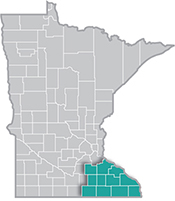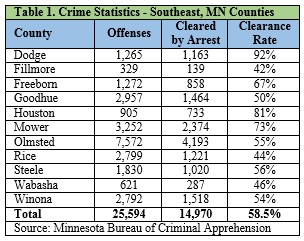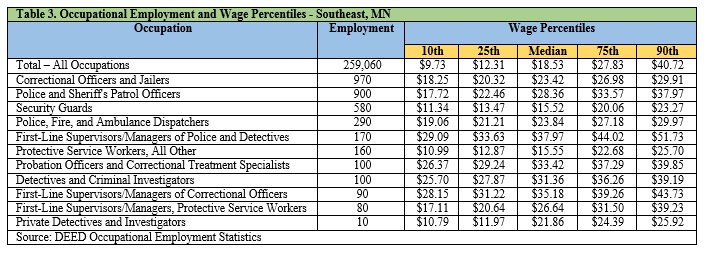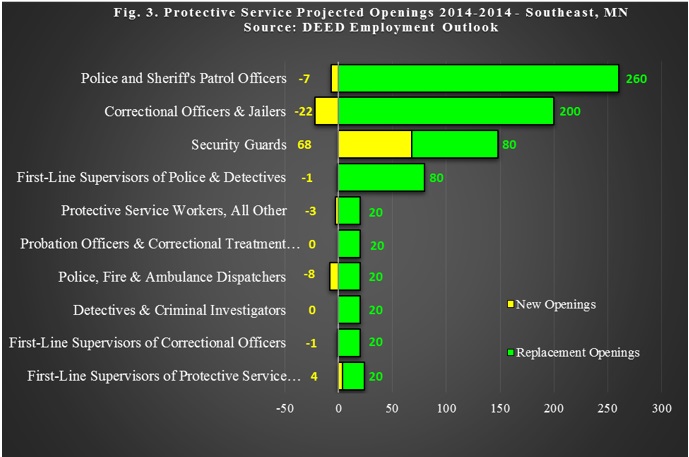 Southeast Minnesota is a health care and agricultural powerhouse. The region is home to the renowned Mayo Clinic and some of the world's most recognized food companies and brands.
Southeast Minnesota is a health care and agricultural powerhouse. The region is home to the renowned Mayo Clinic and some of the world's most recognized food companies and brands.
Advanced manufacturing is especially strong here, with machinery, chemicals, and electronics among the top products.
Want the freshest data delivered by email? Subscribe to our regional newsletters.
2/20/2018 9:47:04 AM
Crime is inevitable in today's world – and Minnesota is not immune from its adverse fallout.

As shown in the offense data from the 2016 Uniform Crime Report from the Bureau of Criminal Apprehension, no areas in Minnesota are void of criminal activity, including the Southeast region. In 2016, the region saw a total of over 25,500 offenses, of which under 60 percent were cleared. (See Table 2 for definitions of clearance rate and cleared by arrest.) One implication of this data: There are still many individuals in the region that have committed crimes, yet have not been apprehended and charged. They could pose a potential threat to the well-being and safety of Southeast Minnesota residents and become involved in future criminal activity.

Southeast Minnesota has hundreds of employees who work in corrections and public safety, including 970 correctional officers and jailers and an additional 900 police and sheriff's patrol officers (Table 3). While the number of jobs in protective service occupations equals only 1.5 percent of the total employment in the region, hourly wages for most of these occupations are above those across all industries in the first three wage percentiles. In fact, for the 10th, 25th and median wage percentiles, only three occupations fall below these thresholds, including private detectives and investigators in the 25th percentile, and security guards and protective service workers (all other) at the median wage.

A variety of jobs in criminal justice can be achieved through various educational and career moves, including both law enforcement and corrections paths (Table 3). Figures 1 and 2 show potential paths for law enforcement and corrections careers with educational requirements ranging from a high school diploma (or equivalent) for jobs such as dispatchers, security guards, and correctional officers, to doctoral degrees for criminal justice professors at the four-year university level.

Compared to the total number of projected openings across all industries, which currently sits at 77,700 from 2014 to 2024, the total number of projected openings for occupations in law enforcement and corrections sits at a minimal 1 percent, equaling about 810 openings during this ten-year period. Over half of these projected openings are for police and sheriff's patrol officers and correctional officers and jailers (Figure 3).

This may be a bit discouraging for those looking to start their career in one of these fields, given the relatively low number of projected openings. However, this could mean that these careers have longevity and are ones that occupants stay in for the long haul rather than moving on to different occupational fields. Given the potential for lateral moves and promotions, as experience and education is gained, it is easy to see how one may stay within this occupational group.
It seems that there will always be crime in the Southeast region despite best efforts. Fortunately, the region is home to many workers employed in every stage and setting of the criminal justice system. This includes those that work to protect the region and its residents after a crime has been committed, such as police officers and detectives, and those who work in correctional settings, such as correctional officers and probation agents.
Contact Mark Schultz.